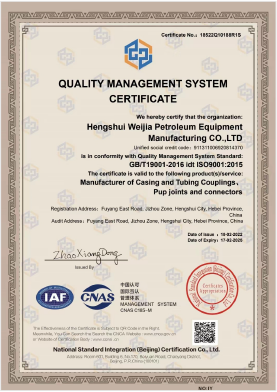- Afrikaans
- Albanian
- Amharic
- Arabic
- Armenian
- Azerbaijani
- Basque
- Belarusian
- Bengali
- Bosnian
- Bulgarian
- Catalan
- Cebuano
- Corsican
- Croatian
- Czech
- Danish
- Dutch
- English
- Esperanto
- Estonian
- Finnish
- French
- Frisian
- Galician
- Georgian
- German
- Greek
- Gujarati
- Haitian Creole
- hausa
- hawaiian
- Hebrew
- Hindi
- Miao
- Hungarian
- Icelandic
- igbo
- Indonesian
- irish
- Italian
- Japanese
- Javanese
- Kannada
- kazakh
- Khmer
- Rwandese
- Korean
- Kurdish
- Kyrgyz
- Lao
- Latin
- Latvian
- Lithuanian
- Luxembourgish
- Macedonian
- Malgashi
- Malay
- Malayalam
- Maltese
- Maori
- Marathi
- Mongolian
- Myanmar
- Nepali
- Norwegian
- Norwegian
- Occitan
- Pashto
- Persian
- Polish
- Portuguese
- Punjabi
- Romanian
- Russian
- Samoan
- Scottish Gaelic
- Serbian
- Sesotho
- Shona
- Sindhi
- Sinhala
- Slovak
- Slovenian
- Somali
- Spanish
- Sundanese
- Swahili
- Swedish
- Tagalog
- Tajik
- Tamil
- Tatar
- Telugu
- Thai
- Turkish
- Turkmen
- Ukrainian
- Urdu
- Uighur
- Uzbek
- Vietnamese
- Welsh
- Bantu
- Yiddish
- Yoruba
- Zulu
Understanding Tubing and Casing in Oil and Gas Production Operations
Tubing and Casing Essential Components in Oil and Gas Wells
In the exploration and production of oil and gas, the terms tubing and casing refer to two critical components of well construction. Both play pivotal roles in ensuring the efficient extraction of hydrocarbons from subterranean reservoirs while safeguarding the integrity of the wellbore. Understanding the differences and functions of tubing and casing is fundamental for professionals in the petroleum industry.
Casing The Structural Support
Casing refers to a series of steel pipes that are installed in the wellbore after drilling. Its primary purpose is to stabilize the walls of the well and prevent the collapse of the borehole, which can occur due to geological pressures or the extraction activities taking place. Casing also serves to isolate various geological layers, thereby preventing contamination of groundwater and minimizing the risk of blowouts.
The installation of casing occurs in stages, with multiple sections being installed as the well is drilled deeper. Each section is cemented in place to provide additional support and to create a seal between the formation and the wellbore. The types of casing commonly used include surface casing, intermediate casing, and production casing, each designed for specific depths and pressures encountered during drilling.
The surface casing, typically cemented several hundred feet down, provides the first barrier against the migration of fluids. The intermediate casing is installed deeper to withstand higher pressures and to further isolate producing zones. Lastly, the production casing allows for the reversal of pressure during the extraction process, facilitating the flow of hydrocarbons to the surface.
Tubing The Conduit for Production
tubing and casing

In contrast, tubing is a smaller diameter pipe inserted inside the production casing. Its primary role is to transport oil and gas from the reservoir to the surface. Tubing is designed to withstand the pressures and corrosive characteristics of the fluids being produced. Unlike casing, which is cemented in place, tubing is typically installed with a certain degree of flexibility to accommodate pressure changes and thermal expansion.
One of the key aspects of tubing is its ability to enhance the efficiency of production. By allowing a direct path for hydrocarbons to flow, tubing reduces the amount of energy required for pumping and minimizes the risk of fluid loss into the wellbore. Additionally, tubing can be easily removed and replaced for maintenance and optimization purposes, making it a crucial component in the lifecycle of a well.
The Interplay Between Tubing and Casing
The relationship between tubing and casing is essential for the successful functioning of a well. While casing provides structural integrity and safety, tubing serves as the operational conduit for production. Proper design and installation of both components ensure that the well operates efficiently and minimizes environmental risks.
Over time, advancements in technology have led to improvements in tubing and casing design. The use of high-strength materials, corrosion-resistant coatings, and advanced cementing techniques has enhanced their performance and longevity. Understanding these innovations is vital for engineers and technicians in the oil and gas industry, as they continue to push the boundaries of efficient resource extraction.
Conclusion
In summary, tubing and casing are fundamental elements of well construction in the oil and gas sector. While casing provides vital structural support and protection to the wellbore, tubing facilitates the efficient extraction of hydrocarbons from the earth. Both components work in harmony to optimize production and ensure safety, making them indispensable in the quest for energy resources. As the industry evolves, continuous advancements in these technologies will be essential in addressing the challenges of modern energy demands.
-
Tubing Pup Joints: Essential Components for Oil and Gas OperationsNewsJul.10,2025
-
Pup Joints: Essential Components for Reliable Drilling OperationsNewsJul.10,2025
-
Pipe Couplings: Connecting Your World EfficientlyNewsJul.10,2025
-
Mastering Oilfield Operations with Quality Tubing and CasingNewsJul.10,2025
-
High-Quality Casing Couplings for Every NeedNewsJul.10,2025
-
Boost Your Drilling Efficiency with Premium Crossover Tools & Seating NipplesNewsJul.10,2025







